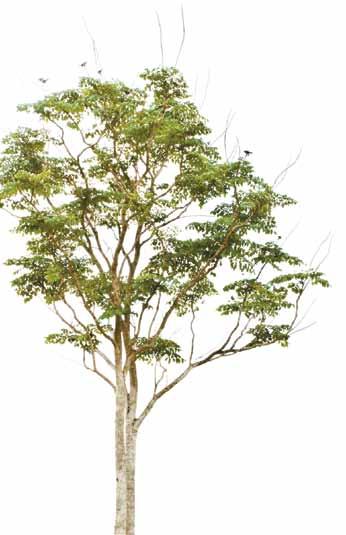
9 minute read
CLIMATE CHANGE
CLIMATE CHANGE AND OUR HEALTH
The Human Costs of a Warming Planet
Advertisement
by Sandra Yeyati
Global warming is not just threatening polar bears far away in the Arctic, and its effects are not somewhere in the distant future. With every new wildfire, hurricane and flash flood, people are understanding that the warming of the planet poses dire consequences for human health right here, right now. It’s personal, and while some sectors of the population are unfairly and disproportionately impacted, we are all in harm’s way.
This is no time to panic, say climate and public health advocates, but rather a moment for preparation, adaptation and mobilization. Prospects are hopeful as we tackle new realities together and evolve our conversations about climate change so we can build resilient, thriving communities. The good news is that many of the individual and policy changes we need to make are exciting opportunities for positive transformation and justice.

usgs/Unsplash.com
Health Threats in Our Midst
The warming of the planet is becoming more noticeable. “That historic two weeks anywhere in the United States where it’s the heat wave of high summer is now six weeks to two months,” says Jay Lemery, M.D., professor of emergency medicine at the University of Colorado and co-author of Enviromedics: The Impact of Climate Change on Human Health. “There are parts of the Middle East now where you can’t be outside and meaningfully cool your body during certain parts of the day.”
“With warming, we’re seeing drought, wildfires, hurricanes, extreme precipitation, flooding and sea level rise, all of which have health consequences,” says Surili Patel, director of the Center for Climate, Health and Equity at the American Public Health Association. “With rising temperature and heat waves, we’re seeing heat stroke, dehydration, diarrheal disease, cardiovascular distress and respiratory illnesses. Extreme weather like wildfires, hurricanes and flooding cause direct injuries, as well as vector-borne illnesses (Lyme
disease carried by ticks or dengue fever and malaria by mosquitoes), mold and harmful algal blooms that happen when it’s really hot, but also show up in places that otherwise wouldn’t have because of the combination of heat and flooding.”
Lemery notes that incidences of mosquito- and tick-borne diseases are moving higher in altitude and latitude, affecting historically naive populations that have not had levels of disease immunity, the infrastructure or cultural habits to protect them. “These are huge killers worldwide, and we’re seeing more and more of that,” he says.
“When you have a warmer winter, spring starts earlier, trees bloom early and pollen season starts early too, and longer exposure to pollen increases your risk of having an asthma attack,” says Professor Amir Sapkota at the University of Maryland School of Public Health, adding that the Northeast is heavily impacted by this phenomenon.
“Here in Colorado, in the summer heat, we have these huge swaths of wildfire smoke hanging over Denver, and people come in to the emergency department. Their inhalers aren’t working anymore, and they’re having chest pain and shortness of breath when they’re on oxygen at baseline,” says Lemery. “These are people normally able to walk across a parking lot with their walker and their oxygen, but now they can’t. We see this all summer long, and we admit them for asthma exacerbation, shortness of breath and COPD (i.e., emphysema), but what we don’t write down is that the air quality is the worst it’s been all year, or that it’s the hottest day of the year.”
“Air pollution contributes to climate change, but it also gets into your lungs and irritates them, exacerbating chronic respiratory illnesses, and can even lead to a heart attack,” says Jennifer Roberts, director of the Path of Positive Communities program at EcoAmerica, noting that the biggest culprits are carbon emissions from coal-burning power plants, diesel fuels and ground-level ozone, which is created when pollution reacts to heat and sunlight.
“With sea level rise, things are flooding more often and we get septic tanks overflowing, sending fecal matter into our drinking water supplies and exposing us to



diarrheal diseases. We also see offices and industrial sites getting flooded and, whether it’s paint, fertilizers or other toxins, those get into our water and it’s very unhealthy,” Roberts says.
The Most Vulnerable Among Us
Certain segments of the population are more at risk. “Lower socioeconomic groups are suffering more from extreme heat events. The urban heat island effect, which unfortunately correlates very well with poorer neighborhoods, means that they’ll have heat waves seven to 10 degrees hotter in their neighborhoods than surrounding places with more green space,” Lemery says. “You see the public health infrastructure less robust to be able to attend to communities of color—like you saw with COVID. There are also physiologic vulnerabilities. Climate change affects the very young, the very old and the very sick much more because of their preexisting vulnerabilities, and then we have geographic vulnerabilities—people who live on the coast without sea walls or in flood plains. As sea level rise proliferates, and that data is really straightforward, they’re going to be going under increased storm surge stress and flat-out flooding.”
Achievable Public Health Solutions
The experts agree that it’s important to frame climate change as a public health issue because it brings a sense of urgency to act. “If it isn’t a crisis, if it isn’t something we’re seeing every day on the front page, then you forget about it. And when you forget about it, the funding doesn’t come,” says Patel, whose work focuses on underprivileged communities that need special attention and funding.
Sapkota advocates for the development of early warning systems so that local health departments can anticipate and adapt to impending extreme weather events, directing resources to the most impacted and vulnerable communities. In some cases, moving people out of flood plains and vulnerable coastal areas through eminent domain might be needed.
Lemery believes that doctors are in a prime position to counsel their patients on preventive measures against climate hazards with “credible messaging repeated over and over again with clarity and no hedging: Wear a mask. Stay indoors during high-heat events. Don’t let children play outdoors when the air quality index is at a dangerous level.”
There are many ways to mitigate threats. As experts point out, we know what to do, and it’s just a matter of putting our attention and resources on their implementation. “One of the biggest ways is let’s remove the sources of harmful spewing pollution—move away from coal, oil and gas—and invest in clean sources of energy, which will also create jobs in these new industries,” says Patel.
Another big step would be to promote mass transit and active transportation— walking and biking—over individual, gasguzzling vehicles. Patel advocates for local investments in bike lanes and sidewalks that encourage the switch. Both Lemery and Roberts express excitement about clean-running electric cars as potential game-changers in transportation.
Planting trees and vegetable gardens are easy, community-building solutions. “Trees are very beneficial to everything from shade to water filtration to producing oxygen and taking up carbon,” says Roberts, who adds that much can be done to restore and protect streams, ponds and lakes from the ill effects of pollution and development. “You get volunteers to clean up the gunk and increase regulations for developers to keep stuff out of the waterways.”

OSORIOartist/AdobeStock.com
Eco-Anxiety and Making Positive Change
Jessica Schiff, a second-year master of science student at the Harvard University T.H. Chan School of Public Health, struggles with eco-anxiety—the depression, anxiety or dread associated with climate change. She says, “It impacts the decisions I make for my life and the future, just trying to think about overall impacts. Where is my food coming from? Do I want to have kids or adopt? Should I live in the suburbs or the city because of transportation and fossil fuel consumption? This all adds a layer of unease or uncertainty about the future. Sometimes I look at Greta [Thunberg] and how far she’s taken things, and feel guilty about not taking things to such an extreme. Is it hypocritical for me to care about climate change but still eat meat occasionally or take a plane to explore the world?”
Schiff deals with eco-anxiety by taking action. “We’re not going to reverse climate change at this point, but that doesn’t mean that we shouldn’t take steps to slow it down or reduce emissions. There are many small things we can each do, like biking or walking instead of taking a car or bus and reducing our use of plastic. It’s a process. You can’t do it overnight, but if you make a lot of small changes, and if everybody makes small changes, that has a bigger effect.”
Roberts acknowledges the power of small, individual actions, but stresses that we should not let the big polluters off the hook. “We need to continue to press for policy changes, holding polluters accountable, passing regulations based on protecting human health and climate, requiring cleaner cars and buildings, and more. That’s the only way we will get to the scale of change needed to truly bring global warming to a halt.”
Sandra Yeyati, J.D., is a professional writer. Reach her at SandraYeyati@gmail.com.
The Benefits of Planting Trees
More Foliage Means Lower Temperatures

Planting more trees can slow down climate change. Science magazine reports, “the restoration of trees remains among the most effective strategies for climate change mitigation.” the arbor day celebrations this month make it an apt time for taking actions that benefit both urban areas and open spaces. more than 166,000 square miles of forest habitat—approximately the size of california—in the tropics and subtropics have been decimated in the last 13 years, and about 2.7 million square miles of forest worldwide remain threatened, according to a recent study by the world wildlife Fund (wwF). Some major ways to take action include: Avoid buying products linked to deforestation. Pressure lawmakers to make supply chains sustainable while balancing the need for regulation with the concerns of farmers and businesses. Urge policymakers to enact zero-deforestation policies and bolster the rights and control of forests for local communities and indigenous people, says the wwF. Donate spare change. By joining Plant Your change for all (PlantYourChange. com), all debit or credit card purchases are automatically rounded up to the nearest dollar and the balance applied toward planting trees. working together with the nonprofit arbor day Foundation (adF) (ArborDay.org) and Eden Reforestation Projects, the initiative has already planted more than 3 million trees, offsetting 5 million miles of vehicle carbon emissions. Become a member of the adF and receive 10 free trees, along with tree nursery discounts; help to qualify a community to receive the tree city USa designation; or get involved with national arbor day, generally celebrated on the last Friday in april, but observed on different days in some states. the organization’s website includes ideas for conducting virtual celebrations if local chapters are not holding public events due to the pandemic. also, consider participating in other adF programs such as the alliance for community trees and neighborwoods
month.
Support the planting of city trees. according to a recent study from the U.S. Forest Service reported in Treehugger. com, the nation’s urban canopies, currently home to approximately 5.5 billion trees, provide roughly $18 billion in annual benefits via the removal of pollution from the air, carbon sequestration, reduced emissions and improved energy efficiency in buildings.








